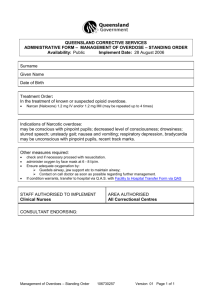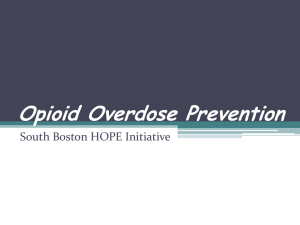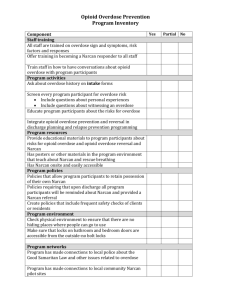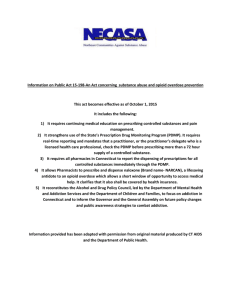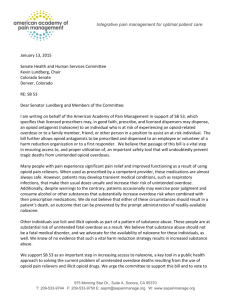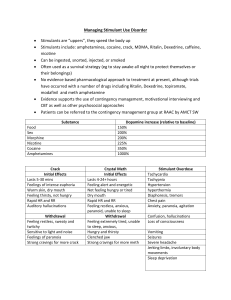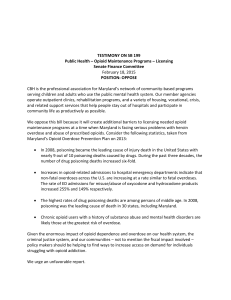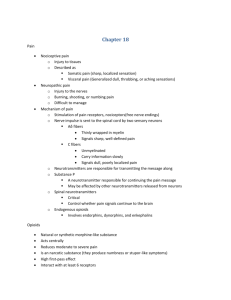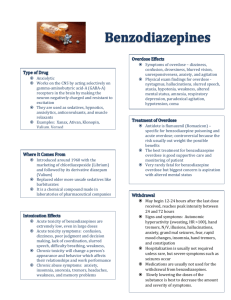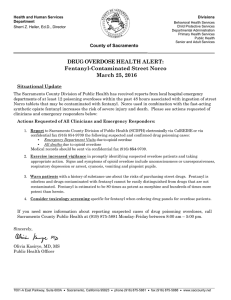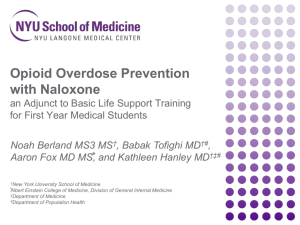Quiz
advertisement
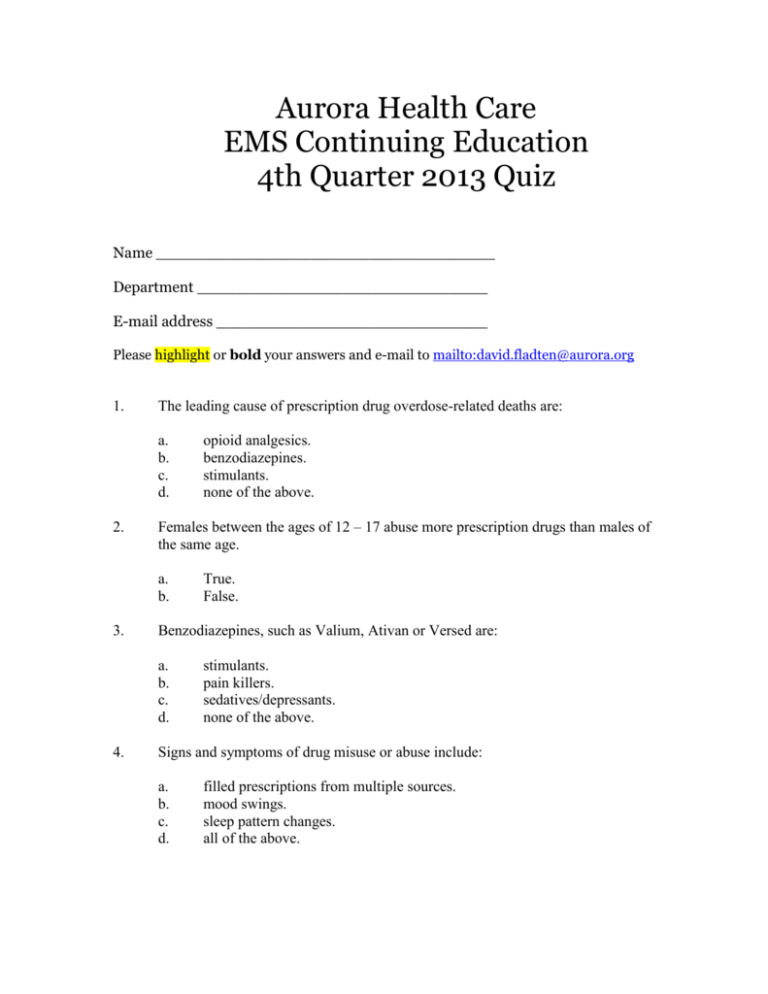
Aurora Health Care EMS Continuing Education 4th Quarter 2013 Quiz Name ___________________________________ Department ______________________________ E-mail address ____________________________ Please highlight or bold your answers and e-mail to mailto:david.fladten@aurora.org 1. The leading cause of prescription drug overdose-related deaths are: a. b. c. d. 2. Females between the ages of 12 – 17 abuse more prescription drugs than males of the same age. a. b. 3. True. False. Benzodiazepines, such as Valium, Ativan or Versed are: a. b. c. d. 4. opioid analgesics. benzodiazepines. stimulants. none of the above. stimulants. pain killers. sedatives/depressants. none of the above. Signs and symptoms of drug misuse or abuse include: a. b. c. d. filled prescriptions from multiple sources. mood swings. sleep pattern changes. all of the above. 5. Signs and symptoms of opioid withdrawal include: a. b. c. d. 6. Signs and symptoms of an acute effect of stimulant ingestion include: a. b. c. d. 7. true. false. Many drugs can cause respiratory depression. Aggressive airway management must be a priority in these patients. The goal is to maintain a patent airway while preventing aspiration in the event the patient vomits. A caregiver can accomplish this by: a. b. c. d. 9. chest pain. hypertensive crisis. seizure. all of the above. Caregiver safety must be at the forefront of patient care as patients abusing drugs have the ability to demonstrate physically aggressive behavior. Some drugs may cause very aggressive behavior by the abuser. a. b. 8. tremors/twitching. nausea/vomiting. depression/suicidal ideations. all of the above. OPA/NPA insertion. supporting ventilations with BVM, if necessary. considering advanced airway, such as Combitube, King or intubation, if necessary. all of the above. Certain drugs of abuse can have an effect on the cardiovascular system. Effects can include cardiac dysrhythmias including both bradycardic and tachycardic rhythms. Because of this possibility, patients suspected of drug ingestion should have ECG monitoring done, including a 12-lead. a. b. true. false. 10. Normal thermo regulation can be affected by certain drugs. Some drugs may cause a patient to become hyperthermic. Because of that, a patient’s temperature should be considered a standard vital sign that an EMT acquires during patient care for these patients. a. b. 11. Narcan is used for: a. b. c. d. 12. provide oxygen to obtain saturation 94% or greater. establish a large bore IV. do not induce vomiting. all of the above. Certain drug overdoses result in a patient who is hypotensive. IV fluid boluses are appropriate for those patients. Per our protocol, fluid boluses of __________ are appropriate. a. b. c. d. 15. give just enough medication to achieve the desired effect. give the medication as quickly as possible. give all of the medication at once without waiting for any effect. none of the above. Our protocols indicate initial care for a drug overdose include: a. b. c. d. 14. stimulant overdose. benzodiazepine overdose. opioid overdose. all of the above. Although our Narcan protocol calls simply for 2.0 mg to be administered, the generally accepted practice is to “titrate to effect”. What does that mean? a. b. c. d. 13. true. false. 50 ml – 100 ml 100 ml – 250 ml 250 ml – 500 ml 500 ml – 1000 ml Certain stimulants, such as cocaine may cause cardiac dysrhythmias. Because of that possibility, ECG monitoring and 12-lead acquisition and transmission to the ED is appropriate care. ALS should also be considered appropriate to manage the dysrhythmias. a. b. true. false.
